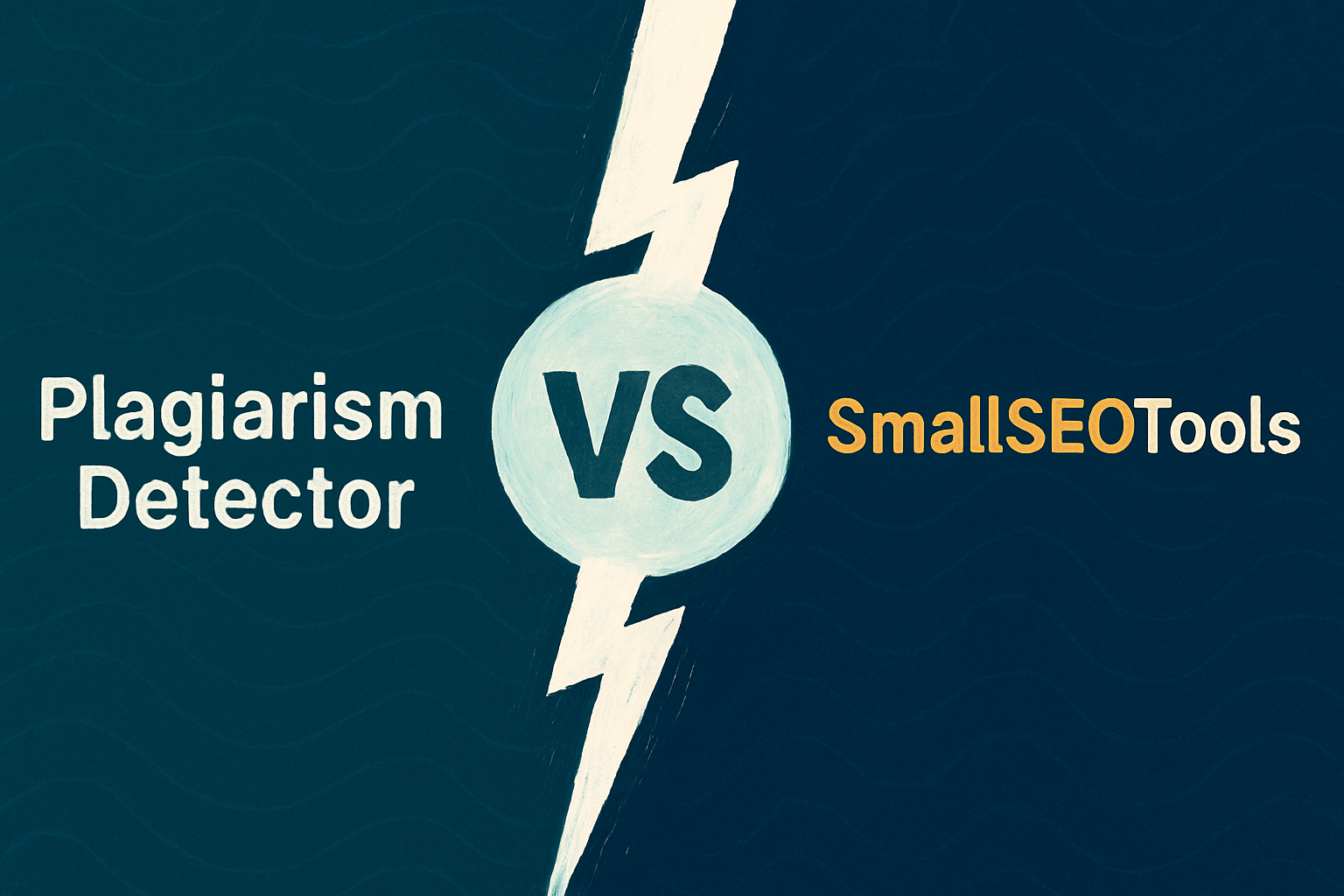
Crafting words needs care, detail, and a fresh approach. But now, with tech growing, grabbing bits of text from various places is simpler. Some folks might think it’s handy to add these views to their work.
This can lead to copying, and we know that can bring trouble. There are tools to spot copy-pasted stuff and mark it. Yet, how well they catch repeated words is key.
So, we’re looking at two top tools for spotting copied content to help you find the one that works best for you.
Introduction to PlagiarismDetector.net
PlagiarismDetector.net is a web-based tool that helps people keep their writing unique. Whether you’re a student, teacher, blogger, or content creator, it checks your text against many sources online to spot any matches.
The tool works with various file types, offers thorough search options, and gives detailed reports on plagiarism. Its easy-to-use design aims to make sure your work stays original and not copied.
Overview of Plagiarism Checker by SmallSEOTools
SmallSEOTools offers a well-liked tool for spotting plagiarism quickly and easily. Students can copy-paste text or upload their assignments to check for copied content by comparing with online sources.
This free tool works in many languages and highlights any exact matches. It blends accessibility features with SEO tools, ensuring academic honesty and online presence. It’s great for those who want to check for copied text without hassle.
Plagiarism Detector Vs Plagiarism Checker — Accuracy Test
Both tools work well, but let’s try them out to find the best plagiarism checker.
Test # 1: Exact Plagiarism
First, let’s take the text from a site and put it into both tools. We chose a bit from ScienceDirect’s article called “Research Aircraft”.
Plagiarism Detector’s Result:
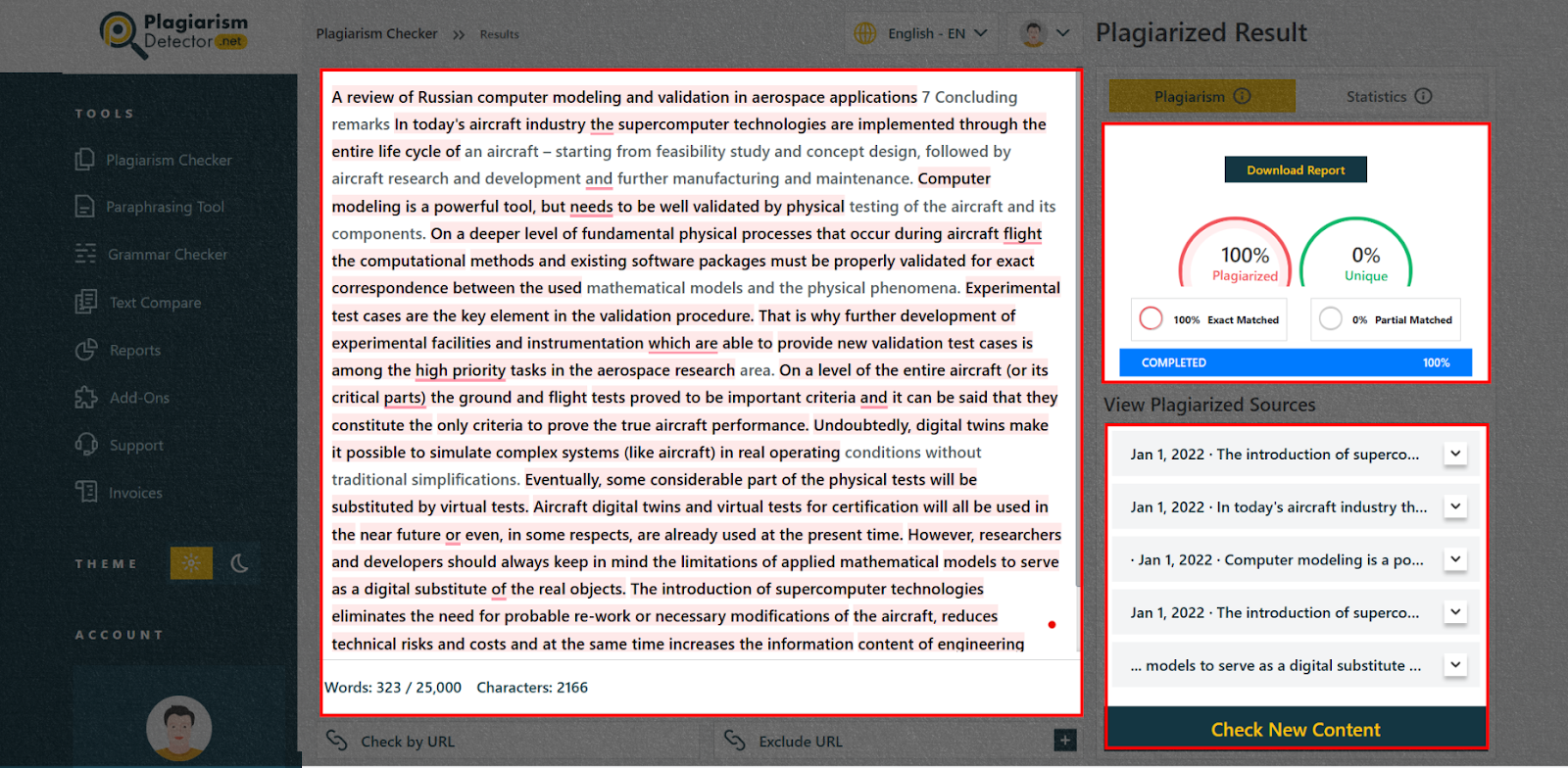
SmallSEOTools’ Result:
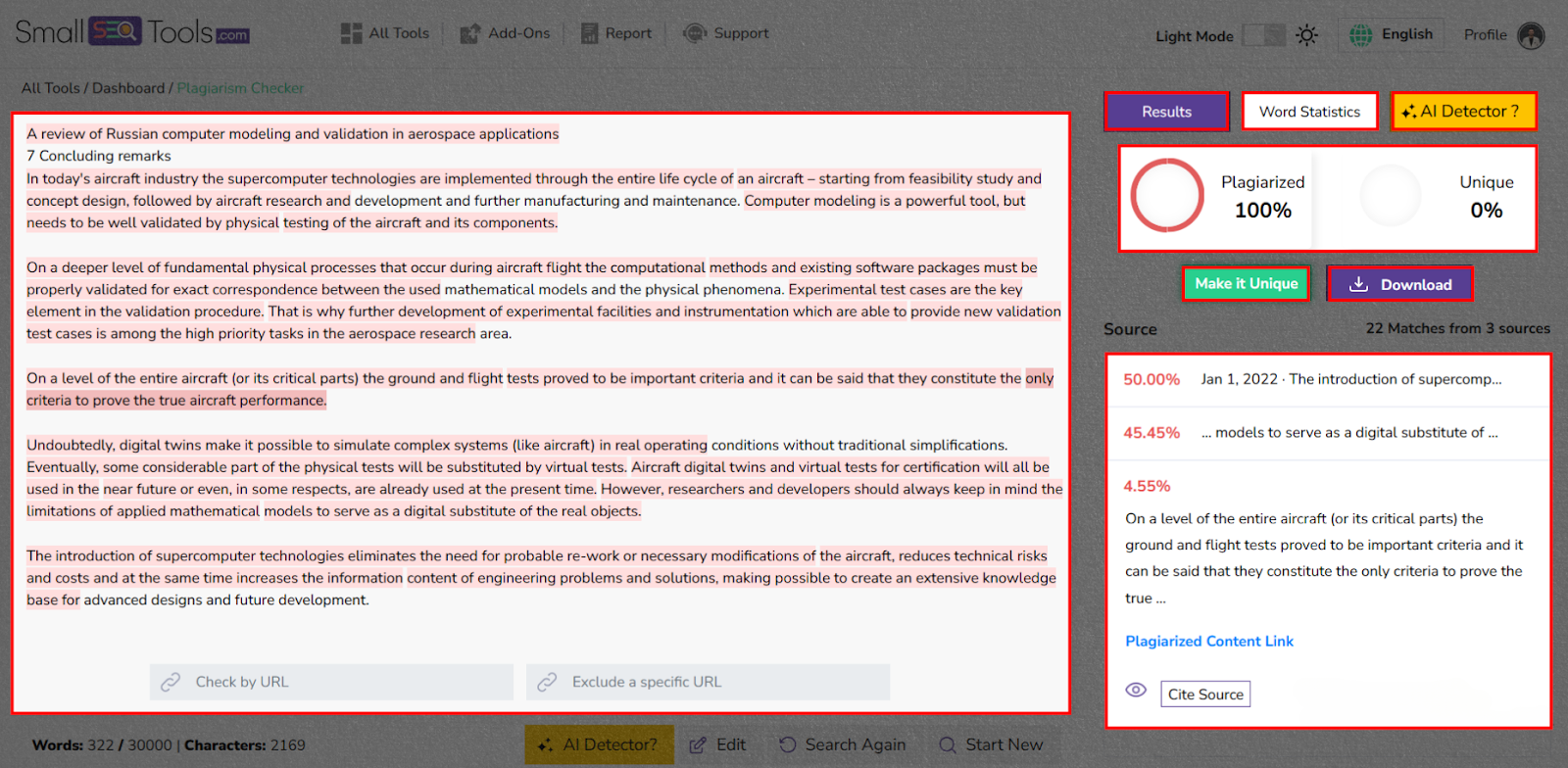
We took the whole text and put it into both tools. They both identified it right. Plus, they showed where the content came from, which makes their process clear.
So, both tools did well.
Test # 2: Partial Plagiarism
For the next test, we’ll take the same text and tweak it a bit. We’ll use an online tool to reword some parts and make them stand out, while leaving other parts unchanged. This test aims to check if the tools can spot content that’s distinct. Let’s try it out!
Plagiarism Detector’s Result:
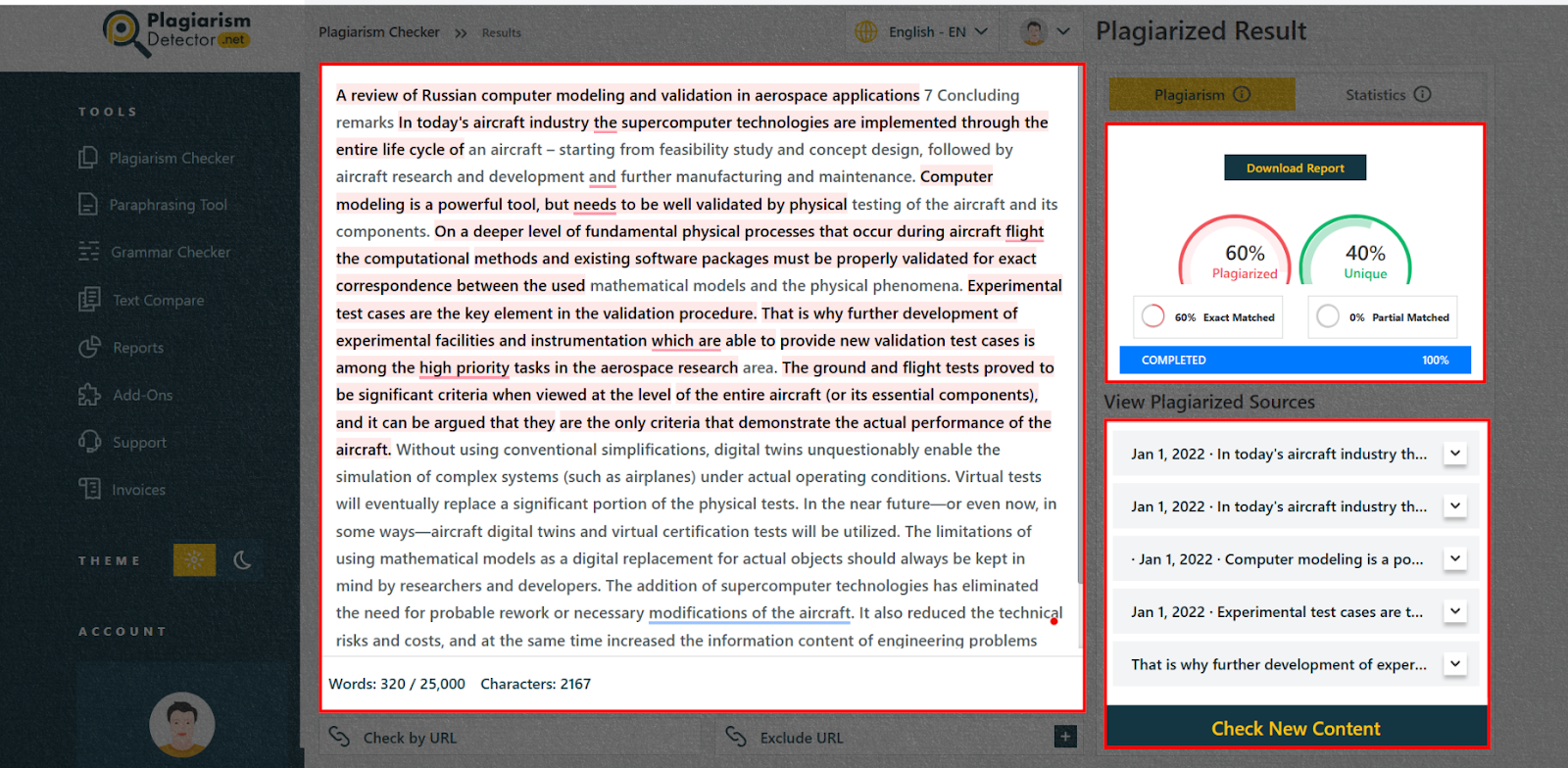
We altered the final sections of the content, making them stand out as unique to the plagiarism detector. Yet, it missed a few sentences at the start. Overall, the results are fairly accurate.
SmallSEOTools’ Result:
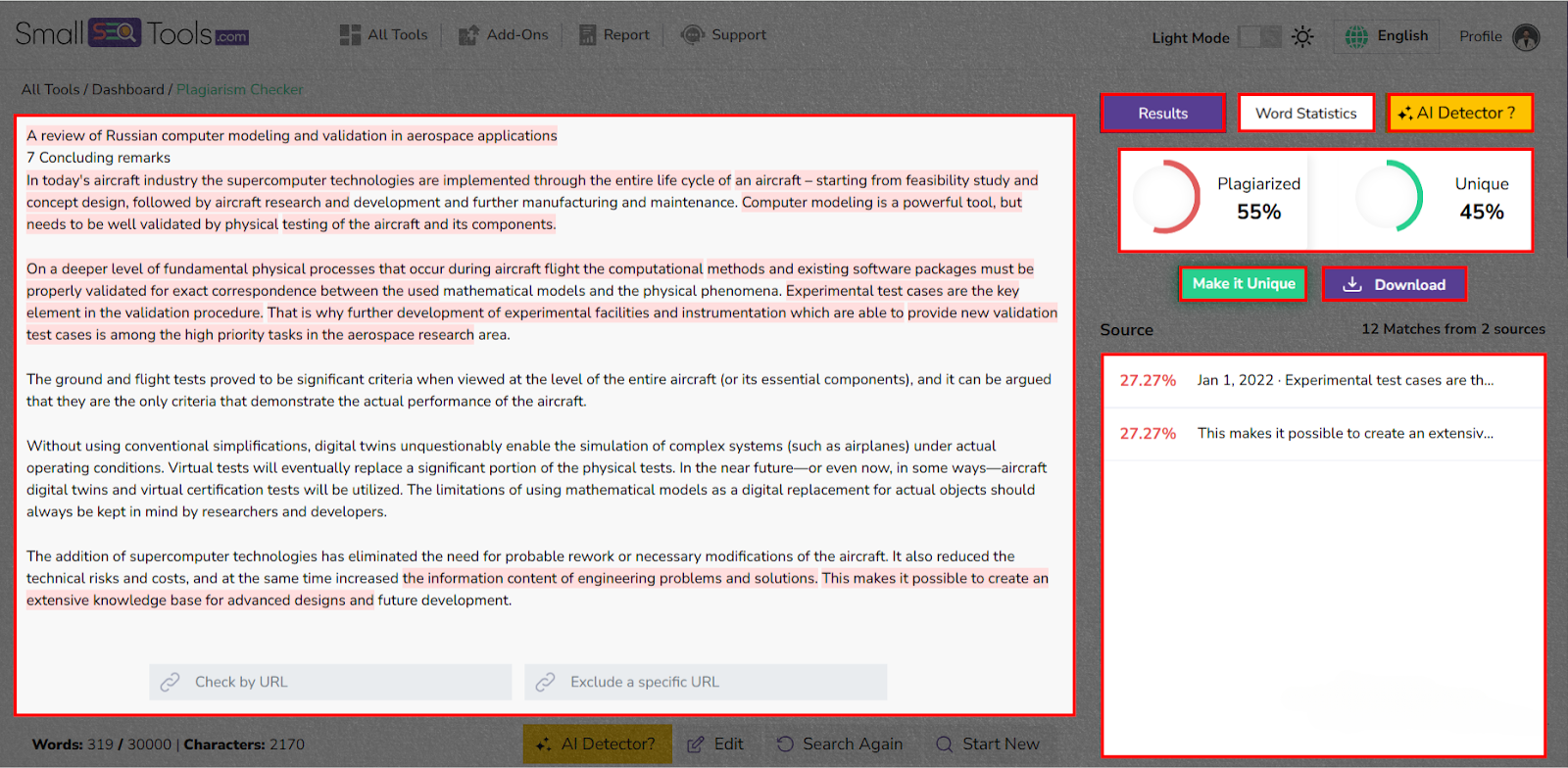
The plagiarism checker from SmallSEOTools gives detailed results. Its output is like plagiarismdetector.net but more thorough. It finds phrases matching the original text. Plus, it ignores parts that are common knowledge.
Test # 3: Paraphrased Content
Now, let’s put in the changed version of the same text. Each part is adjusted, but they don’t sound like natural speech. By doing this, we can check if the outcomes are accurate.
Plagiarism Detector’s Result:
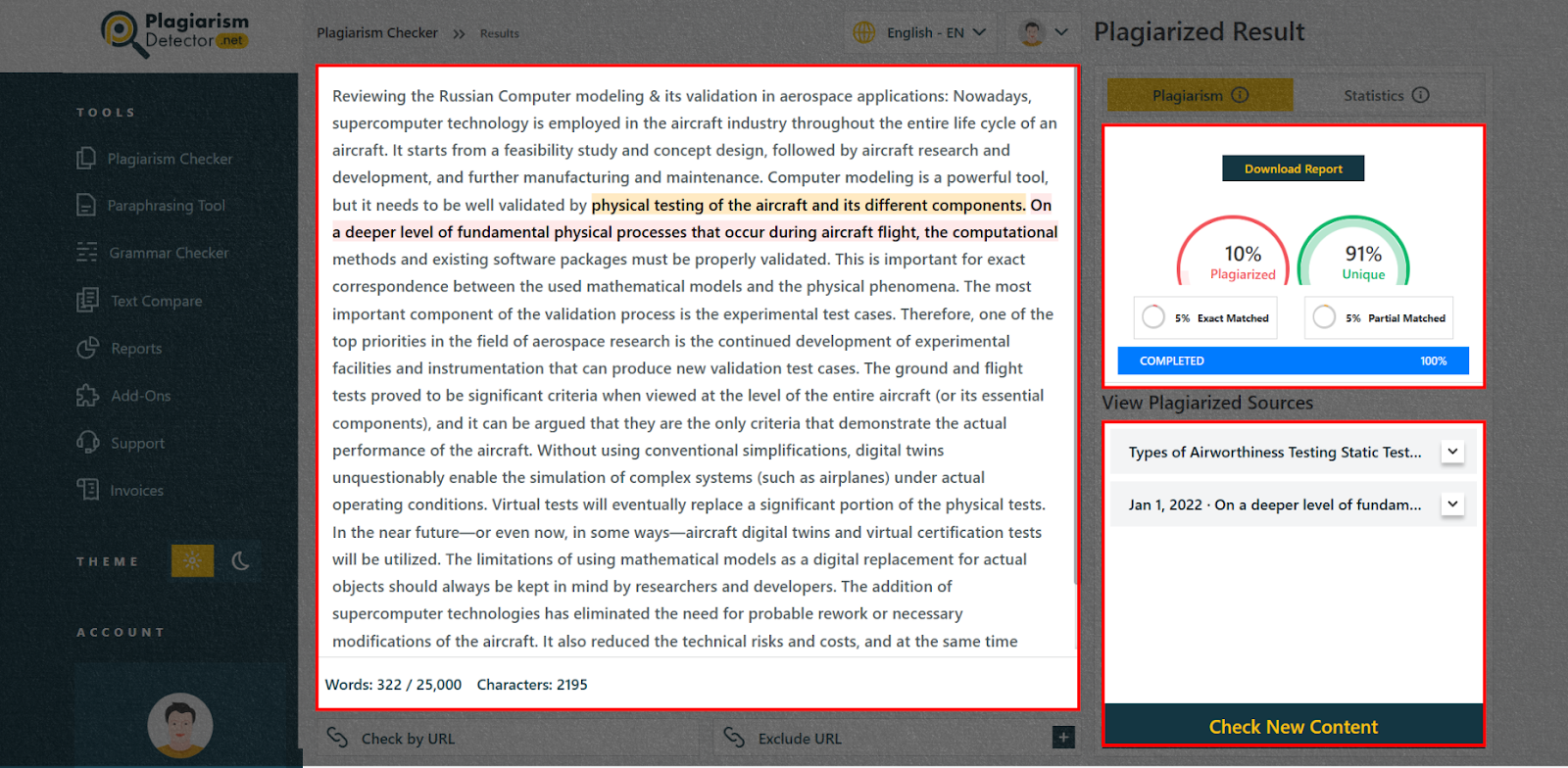
The plagiarism checker showed a 10% match with reworded content, though parts are still like the original. The report is trustworthy, but we’ll use another tool to check it too.
SmallSEOTools’ Result:
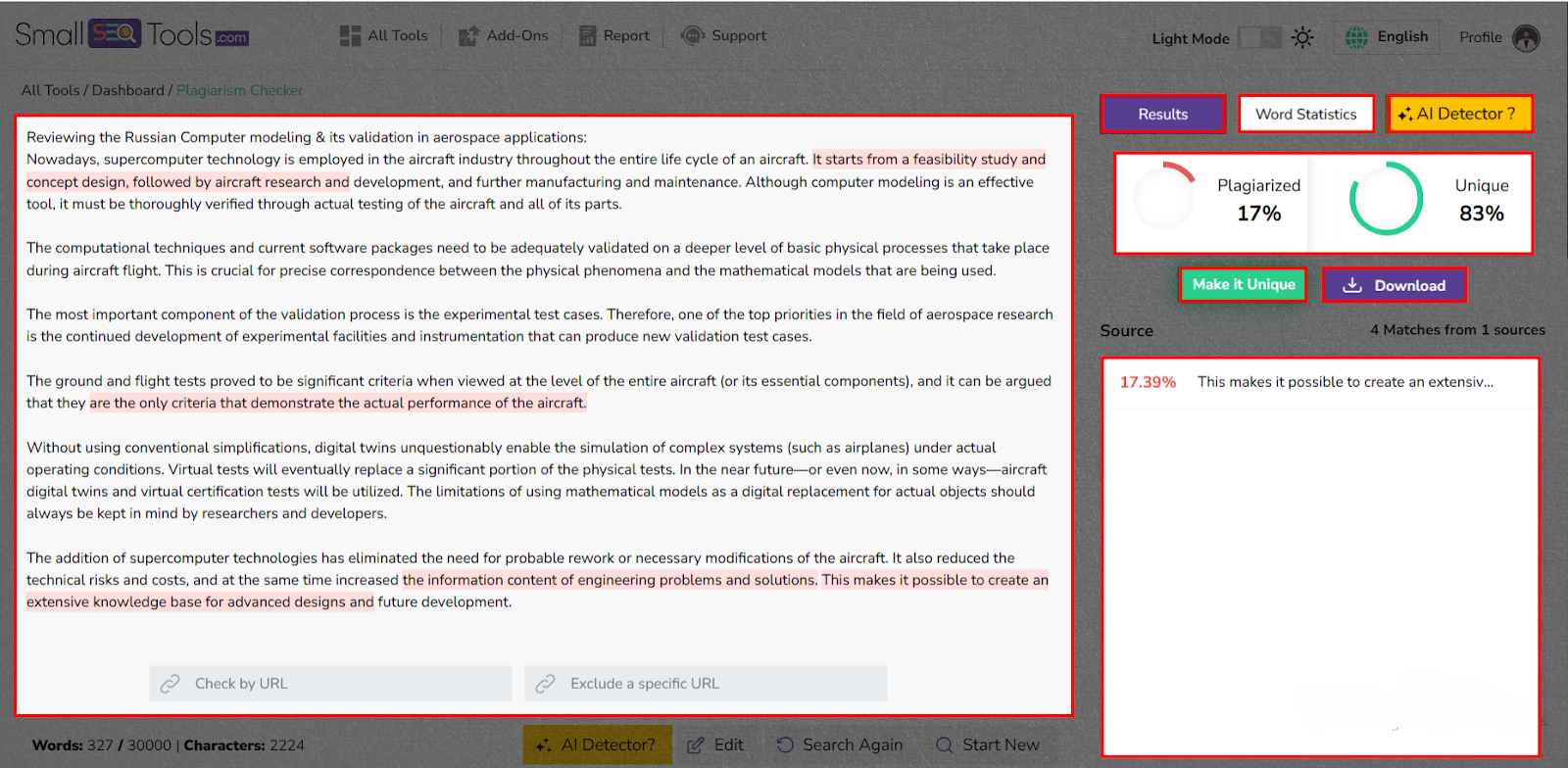
The tool has accurately marked the sections that remain copied. Yet, the changed parts in wording, tone, or sentence setup are not marked. So, this report is pretty precise.
Plagiarism Detector Vs Plagiarism Checker — Features
Here’s a side-by-side look at what each tool offers to help you understand them better.
Cost
The plagiarism detector provides a free version with great features. For more in-depth checks, premium plans with extra tools are available.
SmallSEOTools’ plagiarism checker is totally free. It gives all features without needing a subscription or payment. But, the premium version finds content more effectively.
Accessibility
You can use Plagiarismdetector.net on its website with different devices. It also has a mobile app that you can get from the Play Store and App Store.
Similarly, the plagiarism checker from SmallSEOTools is a web tool that works well on mobile, making it easy to use on various platforms. Just type your text in the box provided, and it will check if your content is original.
Database Coverage
The database for detecting copied content is very large. It compares text with many online sources to find matches. This also applies to the checker, which uses a big database to spot repeated content from various online places.
Ease of Use
Both tools have a simple interface. Users can quickly enter text, see results, and review the content without hassle.
Input Methods
You can use the Plagiarism Detector to check text by pasting it or uploading documents. SmallSEOTools Plagiarism Checker works the same way. Both offer at least three ways to check content:
– Typing text directly
– Uploading a file
– Entering a URL
Report Quality
Plagiarism Detector creates thorough reports. They mark matched content and sources to help revise content. But, they display just the percentage. For extra details, users must download the report.
On the other hand, SmallSEOTools gives full reports highlighting copied parts with source links. You can quickly view the report or look over the entire document.
Word Limit
The Plagiarism Detector’s free version doesn’t restrict the number of words, letting users input unlimited text.
For SmallSEOTools’ Plagiarism Checker, the free version checks up to 1,000 words at a time. Users can run multiple checks for lengthy content. The premium version checks up to 30,000 words in one go.
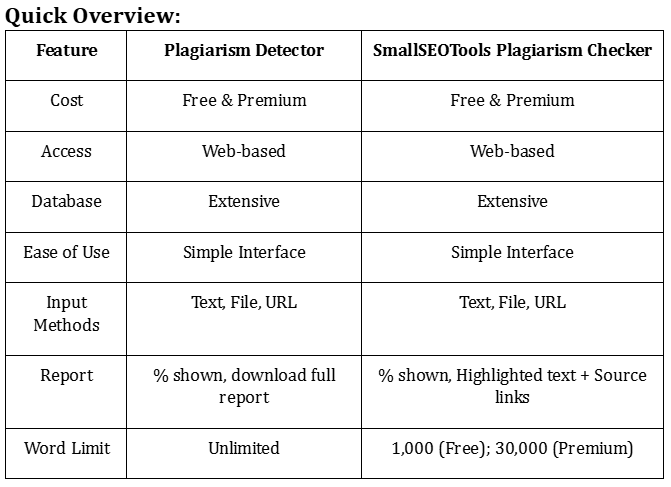
Last Words
Both tools are very accurate. They have small differences. Plagiarismdetector.net is very precise at finding copied content. Smallseotools has an easy-to-use design and is also accurate.
We can’t say one is better. Both give precise reports for finding plagiarism. You can choose either one to check for plagiarism.
